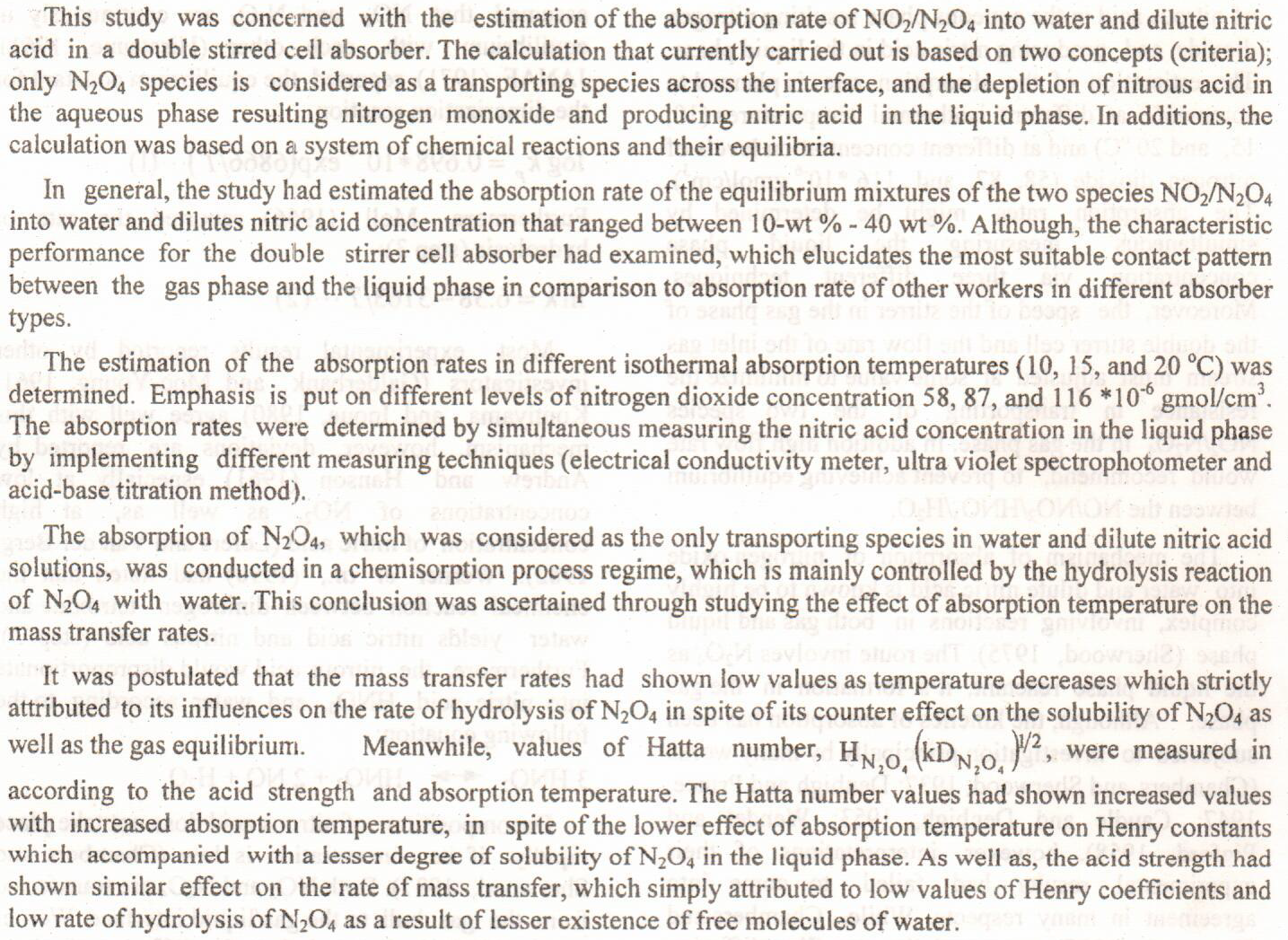
Fusidic acid (FA) is a well-known pharmaceutical antibiotic used to treat dermal infections. This experiment aimed for developing a standardized HPLC protocol to determine the accurate concentration of fusidic acid in both non-ionic and cationic nano-emulsion based gels. For this purpose, a simple, precise, accurate approach was developed. A column with reversed-phase C18 (250 mm x 4.6 mm ID x 5 m) was utilized for the separation process. The main constituents of the HPLC mobile phase were composed of water: acetonitrile (1: 4); adjusted at pH 3.3. The flow rate was 1.0 mL/minute. The optimized wavelength was selected at 235 nm. This approach achieved strong linearity for alcoholic solutions of FA when loaded at a serial concentrati
... Show More (3)
(3)
 (1)
(1)
 (3)
(3)
Metal nanoparticles can serve as an efficient nano-heat source with confinement photothermal effects. Thermo-plasmonic technology allows researchers to control the temperature at a nanoscale due to the possibility of precise light propagation. The response of opto-thermal generation of single gold-silica core-shell nanoparticle immersed in water and Poly-vinylpyrrolidone surrounding media is theoretically investigated. Two lasers (CW and fs pulses) at the plasmonic resonance (532 nm) are utilized. For this purpose, finite element method is used via COMSOL multiphysics to find a numerical computation of absorption cross section for the proposed core –shell NP in different media. Thermo-plasmonic response for both lasers is studied. The
... Show More (20)
(20)
 (10)
(10)
 (7)
(7)
 (7)
(7)
A modified water injection technique has organized by this study to improve oil recovery of the Mishrif reservoirs using polymerized alkaline surfactant water (PAS-Water) injection. It is planned to modify the existing water injection technology, first to control and balance the hazardous troublemaker reservoir facies of fifty-micron pore sizes with over 500 millidarcies permeability, along with the non-troublemaker types of less than twenty micron pore sizes with 45 to 100 millidarcies permeability. Second to control Mishrif reservoirs rock-wettability. Special core analysis under reservoir conditions of 2250 psi and 90 °C has carried out on tens of standard core plugs with heterogeneous buildup, using the proposed renewal water f
... Show More (2)
(2)
To identify the fungi associated with water hyacinth (Eichhornia crassipes [Mart.] Solms), an aquatic weed, which presents in Tigris river from Baghdad south ward. Five regions from middle and south of Iraq (Al-Noumanya, Saeid Bin-Jubier, Al-Azizia, Al-Reyfay and Al-Hay) were selected for this study. Twelve fungal species were isolated. Alternaria alternata, Acremonium sp and Cladsporium herbarum, were the most frequently species (91.66 % ,50 % and 25 %) respectively. The fungi Alternaria alternata, Acremonium sp. and Phoma eupyrena were more aggressive to water hyacinth as (91.66%,83,33%, and 75%) in pathogenicity test.
Background: For decades, the use of naturally accessible materials in treating human disease has been widespread. The goal of this study was to determine the anti-fungal effectiveness /of the lemongrass essential oil (LGEO) versus Candida albicans (C. albicans) adhesion to polymethylmethacrylate (PMMA) materials. Material and methods: LGEO's anti-fungal activity was tested against C. albicans adhesion using the following concentration of LGEO in PMMA monomer (2.5 vol. %, 5 vol. % LGEO) selected from the pilot study as the best two effective concentrations. A total of 40 specimens were fabricated for the candida adherence test and were subdivided into four equal groups: negative control 0 vol. % addition, experimental with 2.5 vol. % and
... Show More (6)
(6)
 (1)
(1)
Background: Adipose derived-mesenchymal stem cells have been used as an alternative to bone marrow cells in this study. Objective: We investigated the in vitro isolation, identification, and differentiation of stem cells into neuron cells, in order to produce neuron cells via cell culture, which would be useful in nerve injury treatment. Method: Mouse adipose mesenchymal stem cells were dissected from the abdominal subcutaneous region. Neural differentiation was induced using β-mercaptoethanol. This study included two different neural stage markers, i.e. nestin and neurofilament light-chain, to detect immature and mature neurons, respectively. Results: The immunocytochemistry results showed that the use of β-mercaptoethanol resulted in
... Show More (4)
(4)
